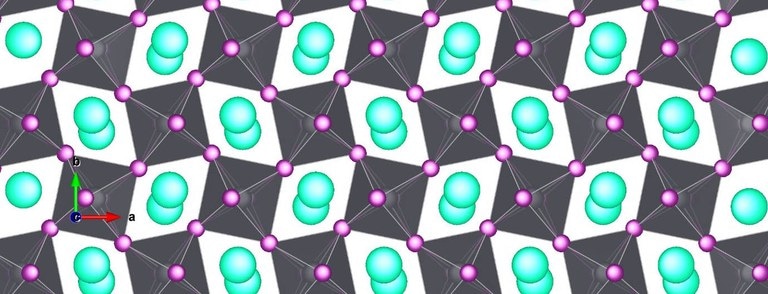Jul 29 2019
For the first time, a KU Leuven-led study has demonstrated how a potential type of perovskites can be effectively stabilized. As a consequence, the crystals become black, allowing them to absorb more amounts of sunlight.
 Top: in their yellow phase, the crystals are very soft, comparable to a plate of jelly. Bottom: in their black state, the atoms in the crystal have reshuffled. Their black color allows them to optimally absorb sunlight. (Image credit: cMACS)
Top: in their yellow phase, the crystals are very soft, comparable to a plate of jelly. Bottom: in their black state, the atoms in the crystal have reshuffled. Their black color allows them to optimally absorb sunlight. (Image credit: cMACS)
Perovskites are artificial crystals that are capable of changing sunlight into electricity. This makes it important to utilize them in the latest solar panels that are extremely efficient and can be made easily. The results of the study have been reported in Science.
Perovskites are essentially semiconductor materials that can be used in a wide range of applications. They have an excellent potential to harvest solar energy. Silicon crystals are comparatively simple and effective materials. They are currently used for making the majority of the solar cells for this purpose.
Conversely, higher conversion efficiencies are provided by perovskite-based devices when compared to silicon. Nevertheless, there is one major concern—some of the most viable perovskites, specifically cesium lead triiodide (CsPbI3), are known to be extremely unstable at room temperature. Such perovskites, under these conditions, display a yellow color because the atoms within the crystal are unable to create a perovskite structure.
If the crystals have to absorb sunlight efficiently and convert it into electricity, then it is important that they exist in a black, perovskite state—and remain that way.
Silicon forms a very strong, rigid crystal. If you press on it, it won’t change its shape. On the other hand, perovskites are much softer and more malleable. We can stabilize them under various lab conditions, but at room temperature, the black perovskite atoms really want to reshuffle, change their structure, and ultimately turn the crystal yellow.
Dr Julian Steele, the KU Leuven Centre for Membrane Separations, Adsorption, Catalysis, and Spectroscopy for Sustainable Solutions
Along with an international group of researchers, Steele observed that when a thin film of perovskite solar cells is bound to a glass sheet, the cells gain and sustain their preferred black state.
Upon heating the thin film to a temperature of 330 °C, the perovskites expand and bind to the glass. After heating, the thin film is quickly cooled down to room temperature. This process causes the atoms to become fixed within the crystals, limiting their movement so that they remain in the required black form.
For a number of years, researchers had already been observing that perovskites can maintain their blackness even after heating, but so far, this was not clear why. “In our study, we chose CsPbI3 because its performance is very high,” Steel explained. “Additionally, it is one of the most unstable types of perovskites, which means it is sensitive to the method we describe and should translate to other unstable perovskites.”
Most of the information used in the analysis was obtained from the European Synchrotron Radiation Facility. In order to figure out the experimental observations on a molecular scale, coworkers at the Center for Molecular Modeling (CMM) of Ghent University supported the discovery with hypothetical simulations of the perovskites’ yellow and black phases.
The computational outcomes were needed to explain why the black phase of the perovskites is stabilized when attaching it as a thin film to a glass substrate. The way this bonding occurs precisely continues to be a mystery, although many theories exist on this.
Normally, we would take a microscope with atomic resolution and directly have a look. However, that’s impossible with perovskites, as they are hard to observe with such a high-resolution imaging instrument, since they are so soft and prone to falling apart under the relatively high energy of common probes.
Dr Julian Steele, the KU Leuven Centre for Membrane Separations, Adsorption, Catalysis, and Spectroscopy for Sustainable Solutions (cMACS)
“There are three pillars that determine the quality of solar cells: price, stability, and performance. Perovskites score high on performance and price, but their stability is still a major issue,” stated Steele. “Understanding how this mechanism works will help further research to ultimately develop solar panels that use pure perovskite crystals.”
Steele continued, “since the entry-level for processing perovskite-based solar cells is relatively low, they can be very beneficial for people in developing countries operating in a more limited infrastructure.”
Perovskites can be also utilized in X-ray detectors, transistors, photoelectric sensors, LEDs, and more.
The study was funded by The Research Foundation—Flanders (FWO) via the project G098319N.